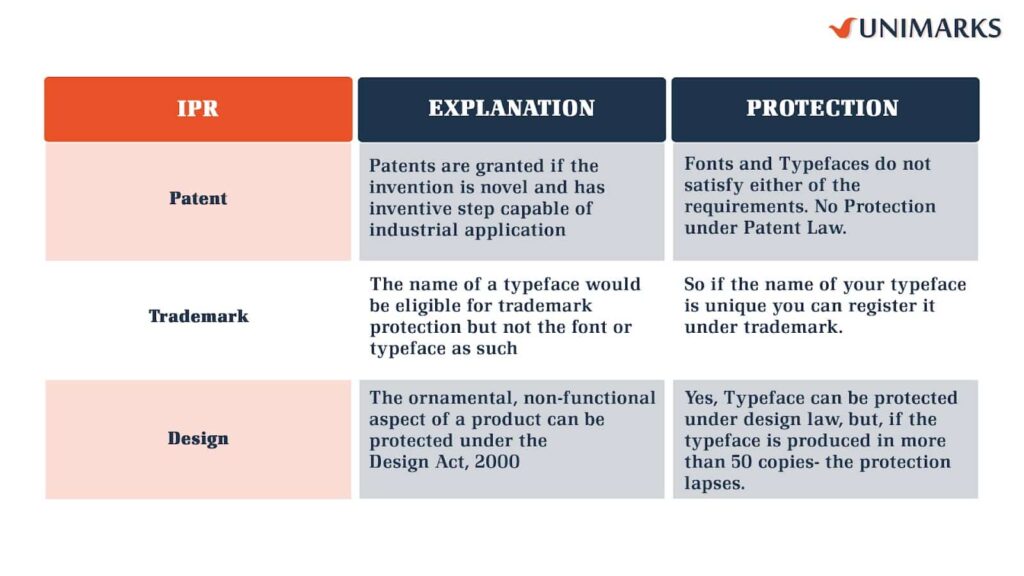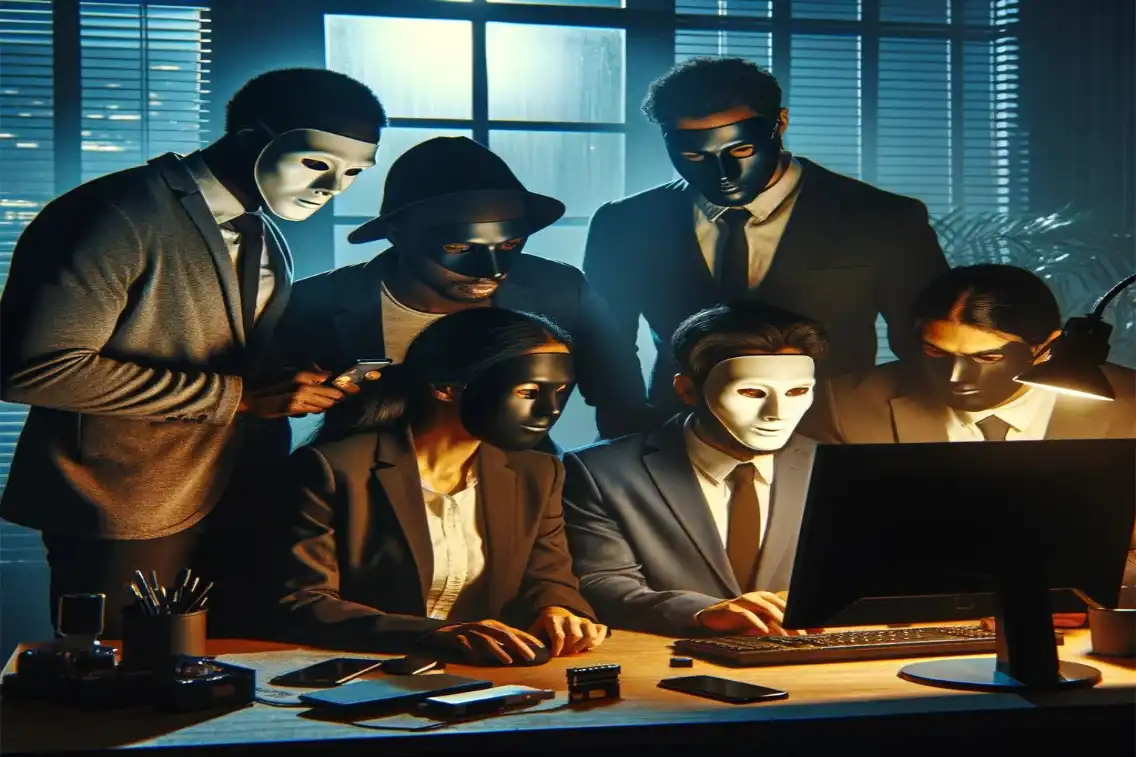Can Fonts And Typefaces Be Copyrighted? This is a very common question asked by many of our clients. When they ask us to examine copyright in their work or while applying for logo registration, they ask us, if they can claim exclusive rights over the font type or typeface used by them in their work. So, we thought why not write down an article explaining the crux of fonts and typefaces of copyright.
Let’s get our basics right:
Fonts and Type Faces are the same! Why are we committing redundancies by using them in duplicates!! Well, Fact Check – Fonts and Typefaces are not synonymous. Typefaces refer to the design of letters, marks and symbols whereas, font refers to the style of letters like the size, bold, italics, etc.
Can Font and Typeface be protected under IPR?
Yes. Indian Laws are trying to recognize creative, unique, and original work. IPR comprises of Patent, Trademark, Copyright, Designs, GI, Semiconductor and layout design and PVP. Let us analyze the possibilities of protection in either of the categories.

What about Copyrights? Can Font and Typeface be protected under Copyrights?
You would argue that copyright subsists in everything created which is unique and original. Yes, fonts and typefaces are unique and original but can you really copyright them? The Indian Copyright Act, 1957 is silent on this question, we will have to do doctrinal research and resort to International Convention to find out the answer to this question.
- The Berne Convention, which happens to be one of the most important Copyright conventions, gave member countries the discretion to determine the extent of application of their laws to works of applied art or industrial designs or models. Further, it also provided the discretion to parties to determine the term of the protection for applied art.
- There exists a separate agreement called the Vienna agreement on the protection of typefaces, but unfortunately, not many countries became members of this agreement. The only U.K did. The treaty has still not come into force.
Should Copyright Protection be granted to Font and Typefaces?
According to Section 2(c) of the Copyright Act, there are no prerequisites for a work to qualify as an artistic work, as long as it is original. Our law gives predominant importance that originality must be in form of expression and not just an idea. The first owner of such Font has to be found to be able to claim ownership.
A quick Flashback: What happened in a case of an attempt to copyright alphabets in the Bengali language?
In the case of Re Anand Expanded Italics, The Copyright Board in 2002 decided that fonts cannot be copyrighted. It was stated, that typeface cannot be constituted as a Work to be eligible for protection under the Copyrights Act. However, there are chances that it can get protection under Design Act.
Analysis:
- The board concluded that in the absence of any provision in the Copyright Act and International Copyright Conventions, traditional copyright lawwould not apply and thus typefaces and fonts could not be copyrighted.
- Typographers apply their skill, judgment, and creativity to create unique typefaces. Copyright protection is limited to the original aspects of a typeface and not to the usage of the alphabet in it.
- If a typeface is used as a textual aspect of a design, to distinguish between products and services of one seller from another, then this may attract trademark protection. However, the scope of protection will be limited and not protect the typeface specifically.
- A user would technically modify a typeface to get a font, which is done through the software. So if a company obtains a license for a font, they are actually licensing the software.
- Without literally interpreting the Copyright Act and the evident absence of a provision protecting typefaces and fonts, a typeface could easily (and rightfully) be granted copyright protection as an artistic work.
There are yet to be concrete decisions by Indian courts on the protectability aspect of fonts and typefaces. However, as of now, Copyright protection cannot be given to fonts and typefaces. But this doesn’t wholly eliminate their chances of being protected in the near future either. As they do satisfy certain aspects that a copyright demands, but we still follow a very ambiguous approach regarding the same. We still need a clear picture and certain amends in the Act to allow this. However, Typefaces can be protected through industrial designs if applied to an article.
US And UK Scenario:
The United States grants copyright protection for fonts, design patents for typefaces, and trademark protection for the name of the typeface. The Copyright Act of 1976 currently provides the statutory framework for copyright law in the US. It extends copyright protection to “pictorial, graphic and sculptural works,” as long as they are in two or three-dimensional form and these include works of artistic craftsmanship setting aside their utilitarian function.
In Adobe Systems vs. Southern Software, the U.S. District Court for the Northern District of California held that font programs are protectable by copyright. Although typefaces are ineligible for copyright protection, they can be applied as a design patent.
Even though several approaches have been adopted to evolve this part of the law, there are yet no concrete decisions to substantiate the same. But also, irrespective of the copyright of typefaces, the associated software code is copyrightable in the U.S.
The United Kingdom offers protection for both typeface and font. The UK has also signed the Vienna Convention on Protection of Typefaces.
CONCLUSION:
Typefaces and fonts are in simple language, the use of letters. Letters form a functionality aspect of this. It is yet to be decided through precise theories if fonts and typefaces do stand a chance to be protected under copyright law. Further, a copyright on the font and typeface will confer indirect copyright on the language itself, which cannot be allowed.
However, The Laws are evolving and IPR has witnessed some major reformations. If the Typefaces are allowed for Copyright protection, then the applicant will have to file a separate application for the letter design for which copyright is sought. Till date so such cases have come up before the board, hence we will have to wait for some clarity on it.
The United States and India Laws have not explicitly dealt with the scope for copyright protection for typefaces. This area of IP requires more evidence-based discussions to achieve the solid ground. The absence of explicit protection of fonts under international treaties cannot mean that such typefaces and fonts cannot be protected. An attempt for such protection was made in the Vienna agreement, but unfortunately, this could not be enforced.







